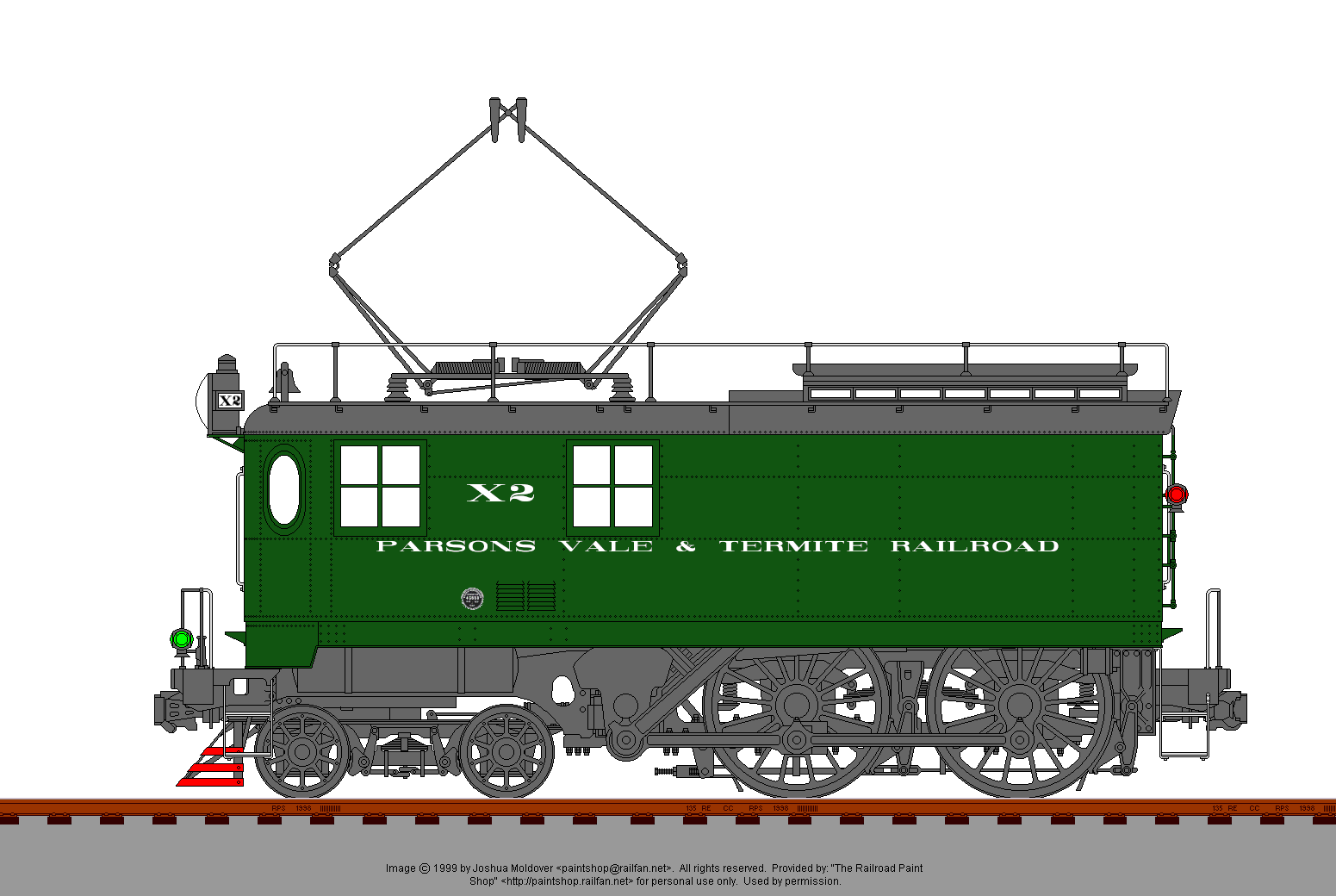When the PV&T decided to electrify in 1911, they started by putting up wire on the Brattleboro subdivision (Merrimack to Brattleboro) and ordering a pair of prototype units to test on this line. #X1 came from GE (the prototype for the class A motors; renumbered to 201 when the testing was finished) and #X2 (this unit) from Westinghouse.
X1 had the advantage of being able to run on curvier track (the PV&T had some idea that they could use streetcar curves on industrial trackage instead of having to engineer around traditional railroad curvature), but had less horsepower and couldn’t reach the speed that X2 was capable of (the X1 maxed out at 50mph, but the X2 – like the PRR’s DD-1s it was designed after – was able to get over 90mph without much trouble.)
What gave X1 the nod over X2 was that X2 was officially too fast for the PV&T’s curvy New England rails, and the operating department, which had plenty of experience with drivers shoving locomotives as fast as they could go despite speed limits, thought that this was a recipe for having to send out the wrecker to pull one of these units out of a river over and over again.
Despite choosing the GE unit over this one, X2 was the basis for the class B design – the PV&T decided to use a locomotive-framed design, though not X2’s single huge body-mounted traction motor & siderod assembly.
X2 operated pulling passenger trains across the subdivision up until 1920 (including one wreck where it derailed at speed and, yes, you guessed it, went into the Merrimack River), when it was retired as the class B motors started to arrive on the property. After retirement, it was used as a Portland Shops shop switcher and recovery engine for about a dozen years, then was pushed into an unused stall in the old steam roundhouse at the shops, where it sat unused – but maintained – until 2012, when it was restored to service so it could accompany class A #201 (ex X1) for the centenary of the PV&T’s mainline electrification, after which it migrated to Canada to become part of the historical fleet.
